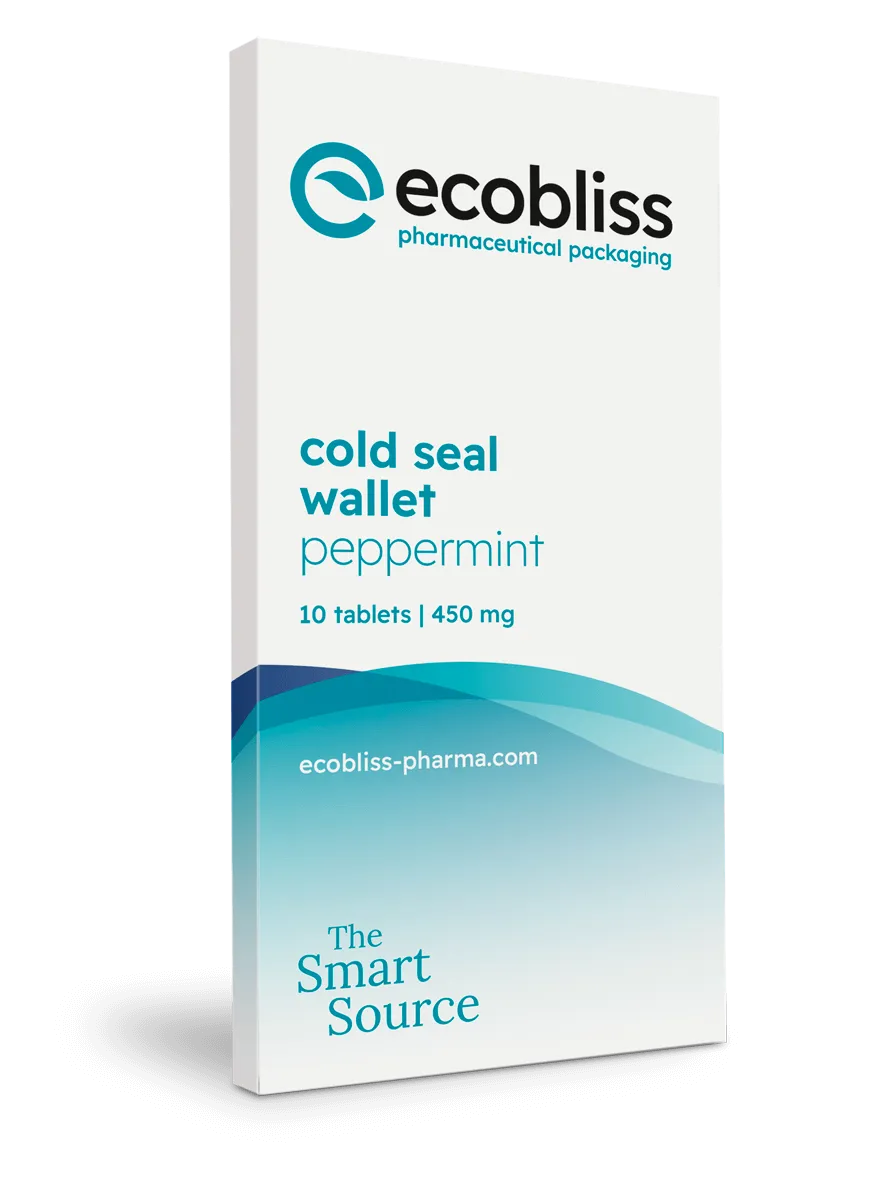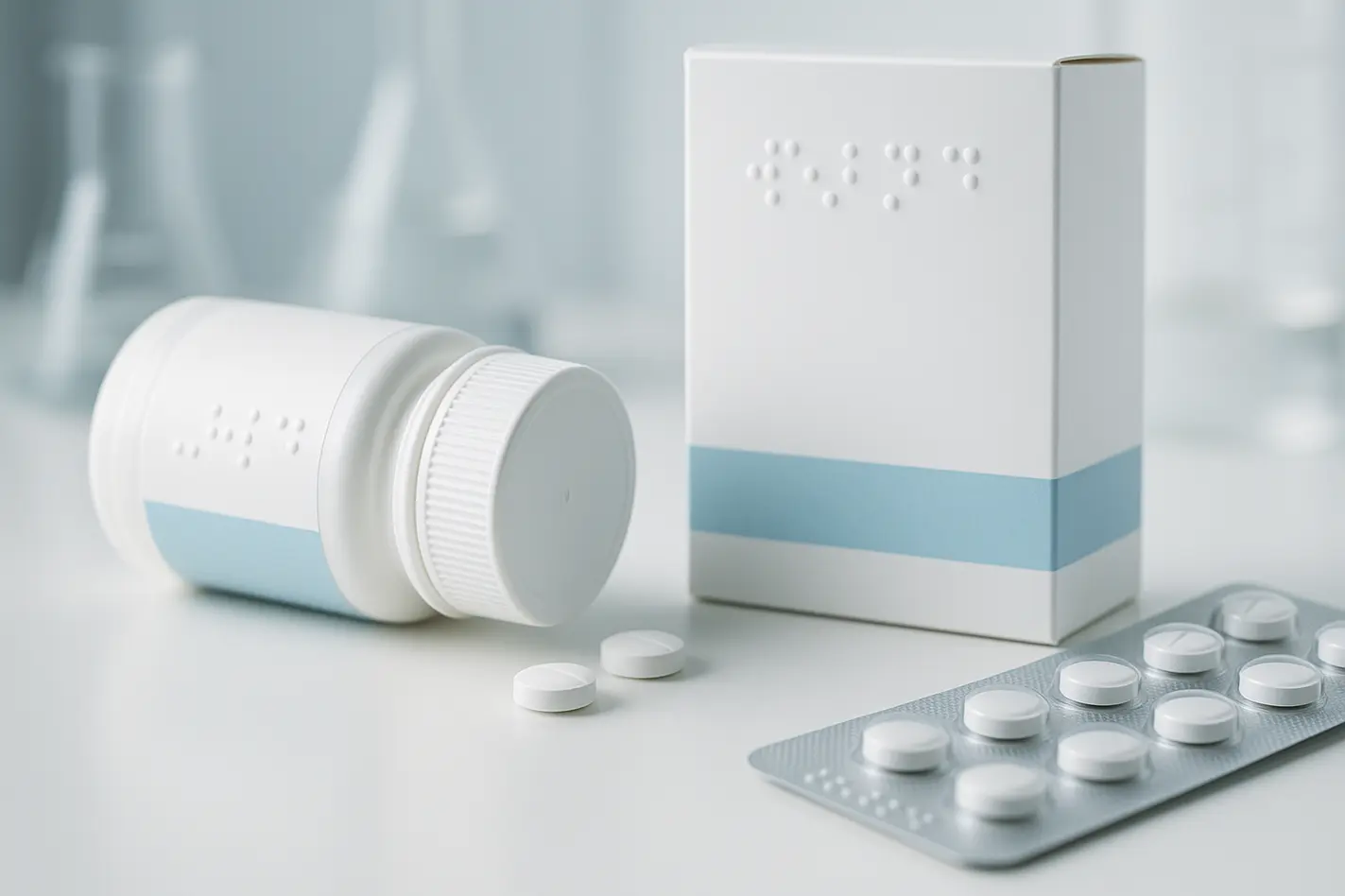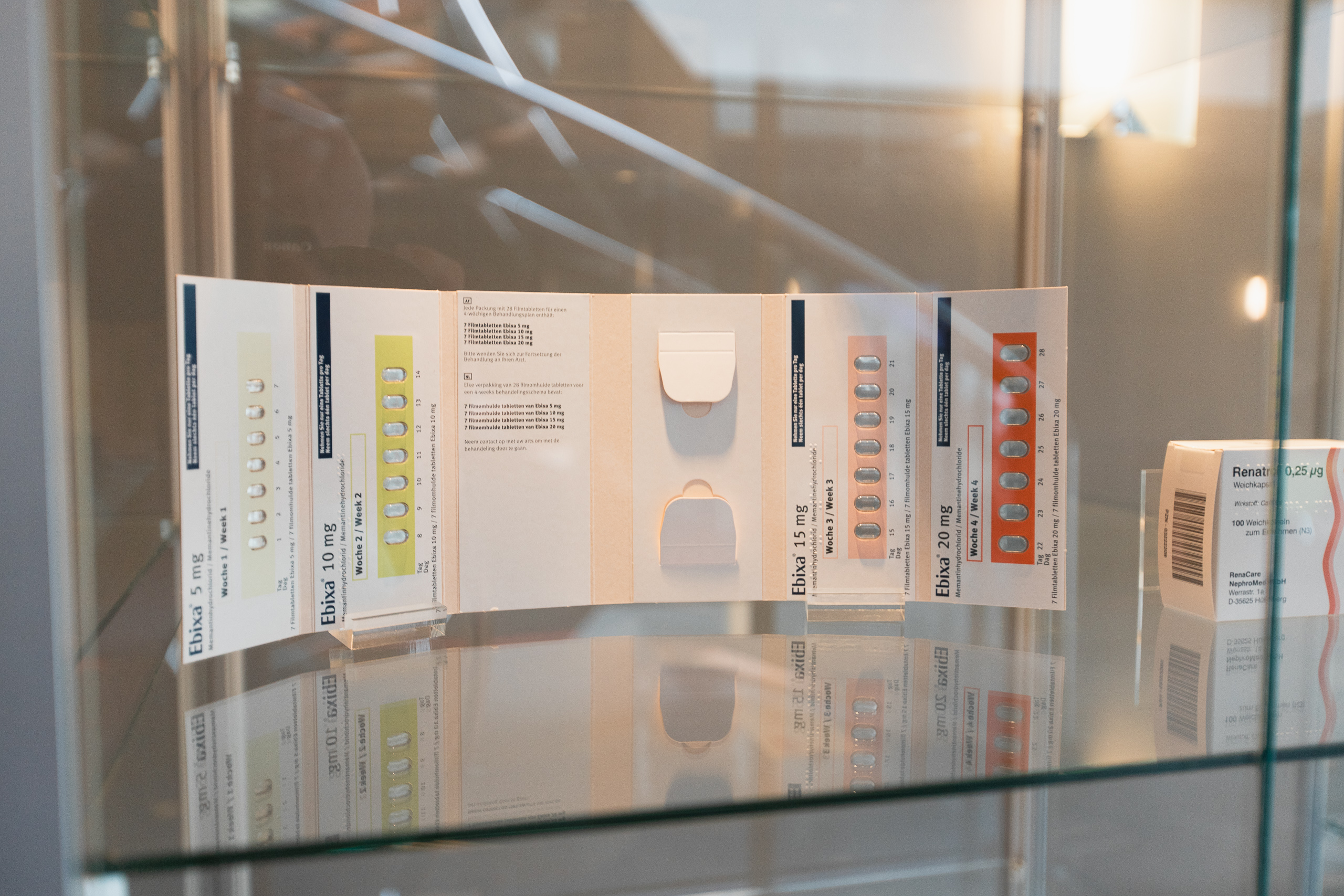Braille packaging for medicine is required in the EU and UK to help blind and visually impaired patients identify and use their medicine safely. Most cartons must include Braille for the medicine name, and in some cases, the strength or dose form. Planning this early is key to meeting legal, quality, and patient safety requirements. The U.S. does not require Braille on packaging but expects pharmacies to offer accessible formats upon request. This guide explains the rules, design factors, and how to manage production and quality for compliant and accessible pharmaceutical packaging.
• Braille is required on outer medicine packs in the EU and UK but not in the U.S.
• ISO 17351 defines Braille embossing, spacing, and quality checks for pharma packaging.
• Teams must plan Braille layout and tooling early to avoid errors and delays.
• Material choice and coating affect whether Braille remains tactile through transport.
• Quality control must check dot accuracy across each step of packaging and shipping.
Why Braille on medicine packaging matters
Braille helps blind and low-vision patients identify their medicine without assistance. This supports their independence and reduces the risk of using the wrong medicine. In the European Union and United Kingdom, this requirement comes from Directive 2001/83/EC (Article 56a), and is enforced by local health authorities. The minimum rule is to include the product name, and in some regions, the dose or strength may also be needed.
In contrast, the United States does not require Braille on pharmaceutical packaging. Instead, pharmacies provide accessible formats like Braille, large print, or audio labels if requested by the patient. These are added during dispensing, not during packaging.
Market rules affecting Braille packaging medicine
In the EU and EEA, outer cartons must include Braille for the medicine name. Some markets may also require additional details to reduce the risk of errors between similar products. The UK continues to enforce equivalent standards under the Human Medicines Regulations and accepts guidance from the MHRA on implementation.
In the United States, pharmaceutical secondary packaging does not need Braille. The FDA focuses on patient access through pharmacy-level services upon request. Even though packaging is not included in this rule, companies selling in the EU and UK often apply the same design practices globally for consistency.
ISO 17351 is a widely used technical standard for tactile labeling medicine packs. It defines how Braille should be formed, including dot height, spacing, and embossing methods. It also outlines testing methods that teams must use during and after production.
Key design decisions for Braille packaging medicine
Adding Braille must be included early in the packaging design process. If teams wait too long, there is a high risk of needing rework, retooling delays, or noncompliant samples. For all formats of secondary packaging with Braille, key factors include:
• Cartonboard thickness: If the board is too thin, it cannot hold the dot shape after embossing. If it is too thick, the dot may crack or become unreadable.
• Embossing pressure and tooling quality: Embossing tools must apply even pressure. Worn or mismatched tools may produce weak or flattened dots.
• Surface coatings: Some coatings make dots smoother or less raised, making them harder to detect. Water-based coatings can help keep tactile quality.
• Artwork zones: Do not place Braille near folds, cuts, or areas where prints may interfere. Positioning is essential to keep dots readable and consistent.
Multi-country packs require different string versions and an organized layout to keep Braille within approved zones. Clear digital artwork with identified Braille areas helps ensure layout fits technical and language needs.
We support early pharma packaging design support to adjust these factors before production begins. This avoids compliance gaps and reduces later cost.
How to keep Braille readable and safe
For Braille to help users, the shape and feel of the dots must be consistent. Braille must stay readable across the full packaging lifecycle, from forming on the press to surviving packing and transport. ISO 17351 defines tactile quality rules.
Quality checks include tactile gauges, digital measurement tools, and in-line inspection during runs. Sampling must continue at each checkpoint to confirm the pressure, positioning, and dot shape remain correct. Over long production, tool wear and board variation can change results.
Secondary steps like banding, wrapping, or warehousing can crush or deform embossed dots. To prevent this, designs should avoid placing Braille under pressure points. Validation must also consider shipping tests and stacking trials under real conditions.
Translation accuracy is also critical. A single Braille letter mistake can make the word unreadable or change its meaning. All versions must be cross-checked and stored in the artwork file. For high-risk content, this includes translation source documents, local approvals, and version control.
How to make Braille packaging medicine user-friendly
Compliance is not the only goal. Packaging also needs to be easy for real users to navigate without confusion. This means clear tactile zones placed in logical, accessible positions, and enough contrast with surrounding elements to guide the fingers to the right area.
For each SKU, teams should prepare validated Braille strings in local languages, approved in advance. These strings must be tied to specific packaging layouts. Version control, file labeling, and language mapping help prevent rework when updating artwork or formats.
User testing is an optional step that can offer real insights. If feasible, ask people who regularly read Braille to review samples. This can show if dots are easy to find, clear to read, and placed logically. The results also help with risk assessments and documentation for audits.
Before release, use a checklist to review each Braille pack. This covers things like dot height, emboss strength, string correctness, panel location, and final translation consistency. If a change occurs, plan retooling promptly to avoid passing errors into print.
When packaging must be both tactile and sustainable
Regulatory and usability goals do not conflict with sustainability goals if design choices are made carefully. Cartonboards made with recyclable fibers can hold embossed Braille well, especially when the fiber type is suited to holding shape under pressure. Water-based coatings help protect the surface without damaging the dots.
Some boards deform when glued or folded, while others maintain structure after packing. Teams should run simple dot retention tests across key folds or glue flaps to be sure. In this way, sustainability and tactile quality both succeed.
This balance is important in new packaging goals where tamper evidence, recyclability, and accessibility all need to coexist in one product line.
Planning custom formats with Braille
In our projects, we often support clients who incorporate Braille into folding cartons, wallets, or combination packs from the start. This planning avoids risk by locking in placement and avoiding overlaps with other content or crease lines. Early inputs also ensure the right tooling is available before scale-up.
This kind of design choice is critical in smaller formats with multiple safety and usability needs. Adding Braille must work alongside symbols, serial numbers, and opening features without crowding the user interface.
Next steps for teams planning Braille packaging medicine
If your product must meet medicine Braille requirements, plan these steps early:
• Finalize approved Braille strings in each market language
• Design layout zones that isolate Braille from folds or labels
• Confirm cartons and coatings protect dot shape during handling
• Reserve enough time for emboss tooling and repeat QC checks
We support teams who need help reviewing layouts and assessing quality samples. If your team is ready to discuss Braille integration, we can assist with packaging scoping and documentation planning for compliant tactile features.
FAQ
What does ISO 17351 require for Braille packaging?
ISO 17351 defines how Braille should be added to medicine packaging. It covers dot height, spacing, alignment, and inspection methods to check tactile quality during and after production.
How do you validate Braille legibility?
Teams use tactile gauges, optical measurement tools, and user feedback. They also check damage risk during bundling, shipping, or storage to protect dot shape and feel.
When should I start planning Braille integration?
Planning should begin during early design steps. This ensures there is space in the layout, time for tool development, and alignment with artwork approval timelines.
Request a free sample now!









